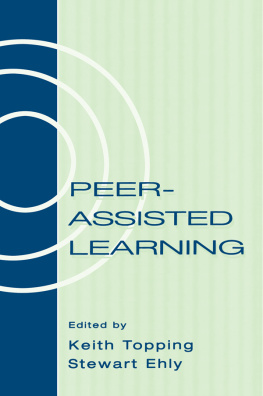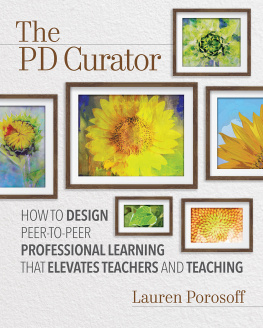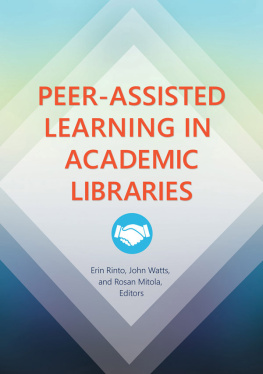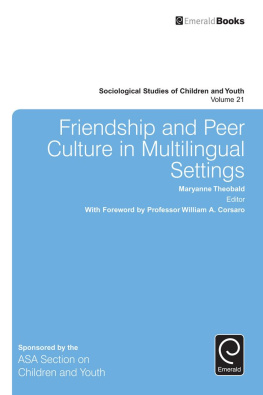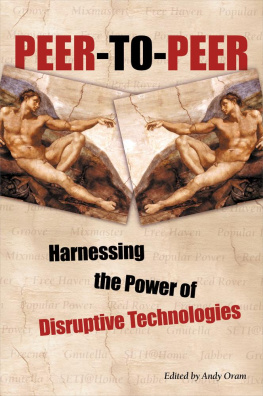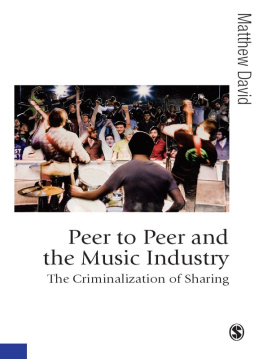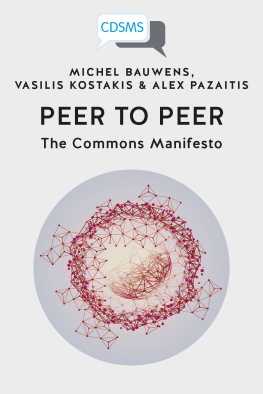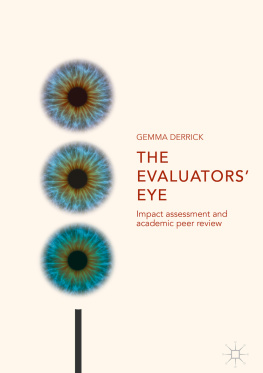Peer-Assisted Learning
First published by
Lawrence Erlbaum Associates, Inc., Publishers
10 Industrial Avenue
Mahwah, NJ 07430
Transferred to Digital Printing 2009 by Routledge
270 Madison Ave, New York NY 10016
2 Park Square, Milton Park, Abingdon, Oxon, OX14 4RN
Copyright 1998 by Lawrence Erlbaum Associates, Inc.
All rights reserved. No part of this book may be reproduced in any form, by photostat, microfilm, retrieval system, or any other means, without prior written permission of the publisher.
Cover design by Kathryn Houghtaling Lacey
Library of Congress Cataloging-in-Publication Data
Peer-assisted learning / edited by Keith Topping, Stewart Ehly.
p. cm.
Includes bibliographical references and indexes.
ISBN 0-8058-2501-0 (cloth : alk. paper). -- ISBN 0-8058-2502-9 (pbk. : alk. paper)
1. Peer-group tutoring of students. I. Topping, Keith J. II. Ehly, Stewart W., 1949 .
LB1031.5.P44 1998
371.394--dc21
98-20777
CIP
Publishers Note
The publisher has gone to great lengths to ensure the quality of this reprint but points out that some imperfections in the original may be apparent.
Contents
Herbert J. Walberg (U.S.)
Keith Topping and Stewart Ehly (Scotland & U.S.)
Hugh Foot and Christine Howe (Scotland)
Larry Maheady (U.S.)
Elaine S. Chapman (Australia)
Keith Topping (Scotland)
Carmen Arreaga-Mayer, Barbara J. Terry, and Charles R. Greenwood (U.S.)
John Fantuzzo and Marika Ginsburg-Block (U.S.)
Charles A. Maher, Brian C. Maher, and Cynthia J. Thurston (U.S.)
Thomas E. Scruggs and Margo A. Mastropieri (U.S.)
Dale H. Schunk (U.S.)
Elspeth Mathie and Nick Ford (England)
Stewart W. Ehly and Enedina Garcia Vazquez (U.S.)
Carlen Henington and Christopher H. Skinner (U.S.)
Angela M. ODonnell (U.S.) and Keith Topping (Scotland)
Audrey Gartner (U.S.)
Shirley Hill, Brian Gay, and Keith Topping
Stewart W. Ehly and Keith Topping (Scotland and U.S.)
GitaL. Vygotskaya (Russia)
Herbert J. Walberg
University of Illinois at Chicago
The editors of this book, Keith Topping and Stewart Ehly, have brought together much of the best educational research on peer-assisted learningfellow students helping and supporting one anothers efforts. The research is not only rigorous but relevant to educational practice. It provides strong, robust findings, and it shows how new methods can be put into practice.
This book, moreover, is timely: Educators are deluged by a huge amount of opinion and advocacy. Much of it is poorly conceived, ill-written, and biased. Little is based on the findings of rigorous inquiry. For this reason, education has not made the fact-based productivity strides enjoyed by other professions and industries. This book, because it is authoritative, well written, and practical, can be a great help in enhancing educational effectiveness and efficiency. We live in an age that demands more from schools and other educative institutions. Far less important for our lives are agriculture, mining, and even manufacturing. Ours is the Age of Informationin which knowledge, skills, and technology have become larger determinants of individual and national prosperity and the quality of life. Productive methods can enable schools to make larger contributions to human welfare.
EVIDENCE
A particularly strong point of this book is its explicit basis in published scientific evidence. Earlier reviews of research (Bloom, 1984; Walberg, 1984) highlighted the substantial effects of predecessors of peer-assisted learning (PAL). Bloom held that effective means of instruction might raise the typical students achievement to that of highly accomplished learners. Estimates suggested that the best instructional methods of the early 1980s such as mastery learning and cooperative learning might get students about halfway to Blooms criterion. As these methods are extended and carefully employed as we approach the year 2000, they might even attain it.
The contributors to this volume show how these early methods and their creative elaborations can be widely and effectively implemented. The efforts and results are highly encouraging. As shown here, imaginative applications can produce good results in a wide variety of settings. PAL yields gains, not only in knowledge, but in positive attitudes toward the subject matter and intended behavioral skills. Importantly, in this era of financial pressures on schools, PAL incurs little additional cost. It need not, for example, require any special equipment.
Although external support is helpful, especially initially, it is possible for some teachers merely to study and develop PAL on their owngreatly facilitated by this book. They can then institute one or more of the strategies represented here. Better yet, they may employ the principles and examples to create new versions in line with their own views and circumstances.
ADVANTAGES
PAL appears to work well for several reasons. It complements didactic or direct teaching and independent study, either of which, if unremitting, can be deadening. PAL also provides rapid feedback: Working alone or during teacher presentations, learners can carry forward and even practice mistakes. In a small group or pairs, however, they need not wait; they can quickly compare and correct their understandings. Peers, by definition, are close to each other in age, ability, status, ethnicity, and other characteristics. They are approachable and have insights into learning difficulties that even the most skilled teachers may lack. Indeed, masters of the subject matter may have the greatest difficulty in seeing the novices obstacles.
Peer assistance, moreover, seems especially appropriate for the new world of changing occupations and vocations. When accurate execution of instructions is paramount, it is hard to beat machines and computers. For this reason, good jobs and recreation increasingly depend on value added to activity by individual initiative and social entrepreneurship. They call for independent preparation and critical thinking, combined with responsible teamwork to ensure both individual and group successmain features of PAL. Thus, PAL yields not only greater learning but transferable skills necessary for participation in economic and civic life. These are only a few advantages of PAL. In the introductory chapter, the editors describe many more that are elaborated and exemplified in the rest of the book.
THEORY
PAL can be traced to Socrates, Plato, Aristotle, and their colleagues. Reclining over food and wine in small groups, Socrates and colleagues questioned one anothers ideas. Aristotle discussed all matters while strolling in the Lyceum of ancient Athens. Although the Greeks argued variously that knowledge must be drawn out or poured in, they exemplified the combination that only a dialog or small group can enact. As the editors set forth in the introductory chapter, psychologists of this century, for example Piaget, Vygotsky, and Rogoff, have carried classic ideas forward. Their followers have stimulated practitioners and have been stimulated by them. Some have worked directly in classrooms and have had to revise their contentions and methods. This is progress.
The editors and authors can now set forth central theoretical principles of PAL. They can also describe many variations and examples that have been practically implemented in a variety of settings. They are unlike academics who ask if programs working well in practice could possibly work in theory. As exemplified here, mutual enrichment of theory and practice seems better. Readers will find the great number and variety of examples of enormous help in considering what particularities of PAL they find most appealing. The editors introduction, moreover, provides an elegant theoretical map or typology of major variants of PAL that should help in further development and implementation.

